Starting in Puerto Vallarta 9 months ago, we covered some familiar territory like Mazatlan, La Paz and Puerto Escondido until April. I left Wayne and Twiggy to fend for themselves in Puerto Escondido while I headed to California to begin a whirlwind tour of Saskatchewan, Alberta and British Columbia to visit with friends and family. When I returned at the beginning of May we headed North into the Sea of Cortez or Gulf of California as it’s also known. This skinny sea separates the Baja Peninsula of Mexico from the mainland coast. It is a truly unique, remote, and fascinating place. You could spend years up here and still not see it all. We’ve been as far North as Puerto Peñasco which is pretty much at the top end and we’ve seen many, many places along the way. Currently we’re in the San Carlos/Guaymas area on the mainland coast midway down the Sea.
After leaving Puerto Vallarta in January we stopped at the uninhabited island of Isla Isabela located half way between Puerto Vallarta and Mazatlan. Besides its very striking topography it’s also a bird and whale magnet. The birds are Frigates, which are really beautiful flyers. Around this island there are literally clouds of them. They’re so thick that from a distance they look like smoke, forming huge tornado shaped structures that extend thousands of feet in the air. Frigates have long, narrow wings with which they can soar almost forever without effort. They can only take off from high places so they never set down on the water. In order to feed, they fly very slowly, only a foot or so above the surface and without stopping they dip their beak and yank out a fish. Whales also feed near the island, and there are usually several in sight blowing and diving.
A boat named “Breezy” also heading for Mazatlan left Isla Isabela a few hours ahead of us. Later that night, they collided with a fishing boat and lost their mast. Dismasting is a catastrophe on a sailboat. When it happens, hundreds of pounds of mast and rigging fall from thirty or forty feet above, endangering boat and crew. In addition, the force necessary to dismast a boat may also tear the top of the boat off. Finally, once the mast is down it remains attached by its rigging and in any kind of seas could puncture and sink the boat. In “Breezy’s” case the mast crashed down squarely into the cockpit and certainly would have injured anyone there. Fortunately both Jay and Didi were below and they were able to clean up the mess enough to limp into port under power. We helped remove the wreckage in Mazatlan and had a chance to hear the whole sad story. It seems that “Breezy” was under power and Jay was on watch, but below making coffee. He didn’t see the shrimp boat before the collision and they were unable to avoid “Breezy” because of their net. Jay’s view was that the collision was entirely his fault.
We had an exciting experience ourselves that night. It was pitch black and we were closehauled in about twenty knots of wind. The seas were big enough that they were consistently coming aboard and running down the deck. Susan was on watch and I was asleep with a pillow over my head. We both heard something bang down the hull, sounding like a log. Then Susan yelled and I jumped up on deck. Our greatest fear is of someone going overboard at night. In case it ever happens we have a life-ring with a light attached that should be thrown after them to pinpoint their location. A large wave had torn the ring’s bracket, the ring and the light over the side, automatically turning on the light. In just those few seconds we were already losing sight of the light behind the waves. We quickly turned downwind, then gybed toward it. Without anything for a visual reference we had no idea how far away we might be so we steered directly for the light, until suddenly, we passed it. Instantly we turned up into the wind and the boat stopped dead in the water within a couple feet of the ring! That was as close to a real night-time man-overboard situation as I ever want to be.
While in Mazatlan we had a chance to take in a bullfight. They take bullfights very seriously there. The one that we went to was jammed with every seat filled and every bit of standing room crowded. The actual fights were conducted from horseback and were a disappointment. The horses were beautiful and fantastically well-trained but there was never any sense that the matador was taking any kind of risk. As a result it felt like watching a ritualized butchering. The only contest other than the one between the horse and the bull didn’t even involve the matador. There was sort of a half-time in each fight at which point the bull would be well and truly angry but not yet seriously injured. This next bit was way too risky for the wussy-girl matador so he hid in a closet and they brought out the amateurs. These were young, unpaid, and untrained but very macho Mexican men. They were dressed in street clothes except for one – hereafter referred to as Victim – who wore a red Santa Claus-like hat. Victim and his five friends entered the ring on the opposite side from the bull with Victim in the lead and his friends spaced a couple of feet apart in single file behind him. Meanwhile the bull was being kept busy on the opposite side of the ring. As soon as Victim and friends were in the ring, Victim began prancing toward the bull with everyone else following along behind. The bull charged! Just before the collision, Victim started to run backwards still facing the charging bull. You have to understand that the bull weighed 900 pounds and was probably doing 30 mph. As they impacted, the bull put his head down and slashed with needle-sharp horns. Victim was hit just below the waist, doubled up and thrown onto the bull’s neck with his legs hanging down in front. Without any noticeable reduction in speed the bull slammed into each successive friend until the whole gang was piled up on his horns. They were furiously digging in their toes to try to slow him down before he could crush them against the wall. A thousand people were holding their breath and there was a collective sigh of relief when they got the bull stopped. Immediately friend #5 peeled himself off and grabbed a foreleg, #4 took the other foreleg and one by one the others separated themselves and took hold of various appendages near the front of the bull. Last off was Victim. Astonishingly he was not only ungored, but he also seemed to have the use of all of his limbs. Victim then ran around to the back of the bull and took a good grip on the tail. The friends simultaneously let go and scattered and Victim was dragged at top speed around the ring. Bull naturally was not overjoyed at this treatment but was unable to turn sharply enough to discipline Victim effectively. Eventually when they passed near a wall, Victim let go and dived into the crowd before the bull could finish him off.
Leaving on the passage from Mazatlan to La Paz was more difficult than usual mainly because I had a bad stomach bug. However, as always, we had a deadline to meet. In this case Susan’s upcoming trip home. Anytime that you leave a harbour for a major trip, there are always plenty of people who have nothing better to do than tell you how dangerous it is out there, or how bad the weather will be. Usually these are the same people who haven’t gone anywhere in years and if they ever do, it’ll be in a convoy, at top speed, under power. We’ve learned to ignore them and make our own decisions which are more likely to be based on whether we’ve finally got the boat ready rather than external factors. On this day, several boats had left early (you know, before noon) and returned reporting high winds and seas and extreme difficulty making progress toward La Paz. “Ha!” we said. “Wind is just what we like, a requirement for sailing you know.” Naturally we expressed this opinion vehemently to all those who felt a need to force-feed us advice. Out we went, to discover big, uncomfortable seas and a strong wind blowing straight from La Paz. In a sailboat, your perception of both wind and seas is directly related to their direction. Twenty-five knots of wind and eight foot seas from behind or abeam, means a fast, exhilarating sleighride. If the same conditions are from dead ahead, you’ll only be taking off your snorkel to make use of a bucket. (Speaking of which, the next time you’re flying, could you bring home the air-sickness bag for us? Thanks.)For once, all of those harbour sailors were right. The wind was dead ahead and the horrible seas were converging from two different directions. Needless to say we were more than a little uncomfortable. In addition, since a sailboat cannot sail directly into the wind, conditions were forcing us to head for Cabo San Lucas, rather than La Paz. Susan expressed her discontent by doing a firehose imitation with her lunch (properly known as projectile vomiting). Meanwhile everything that I ate or drank was dropping straight through without even slowing down. If only we hadn’t been such big-mouths, we could’ve gone back! Finally after 20 hours of downright inhumane conditions we realized that we were becoming dangerously tired and weak. In our desperation we concocted a brilliant plan. We would return to Mazatlan, but rather than going back to the harbour we had started from, we would hide our red faces at the opposite end of town. What a relief! We anchored up and went to bed and followed that with four days of recuperation. When we finally got going again, it was a pleasant uneventful crossing. Arrival in La Paz completed our 2000 mile upwind journey from Panama City.
Having been to La Paz many times before we thought we knew all of the landmarks. We were thus surprised to see a very tall radio tower on the waterfront as we approached. When we actually arrived the radio tower turned out to be the mast of “Endeavour”. She was an America’s Cup boat in the 1920’s and she is gigantic. At 130 feet “Endeavour” is easily the largest sailboat that we’ve ever seen. Her mast is 165 feet tall and the boom is so wide that you can have a picnic on it. We were told by a member of the crew that it takes nine people just to tack. “Endeavour” was recently overhauled for an unbelievable $10 million! If you’re thinking about chartering a sailboat, she’s available for only $60,000 U.S. per week. Any takers?
In April, I set out to visit home. What was I thinking? Saskatchewan in April! I know there’s such a thing as culture shock but how about weather shock. I hitched a ride from California to Saskatchewan with my folks in their motorhome. Forty-eight hours after leaving sunny California we found ourselves driving through a good old prairie snow storm. Visibility was nil and the highway was coated with slick ice below the blowing snow. We limped and slid our way into the haven of a Moose Jaw motel parking lot. That motel and every other motel was full of highway refugees. We elected to spend the night in the motorhome to keep the water pipes from freezing and to leave room for stranded motorists in the motel. Even with the heater going full blast, I found myself wearing two pairs of socks, sweat pants, jeans, a turtleneck, two sweaters and mittens and I was inside. Outside it was -35°F. Welcome to Saskatchewan!
Perhaps as a direct result of my complaining about the weather in Saskatchewan we were treated to a rather warm summer here. We can’t say that no-one warned us. ‘They’ told us we’d be hot if we dared to spend the summer in the Sea of Cortez. We smiled and thought to ourselves, “Wimps!” Now we too can carry on the tradition of warning others how hot they’ll be if they dare the Sea in the summer. It was unbelievably hot! We’re pretty sure we’d have melted without our fans and awnings.
I’ll try to give you some idea of what it was like through July, August and September. Sometimes we’d go to bed with an inside cabin temperature of 95°F and wake up to a cool 92°F. Crank your thermostat up at home and give that a try. The worst nights were the ones where we finally gave in and went to bed when the temperature was 94° to be awakened shortly thereafter by a hot, dry, devil wind that rapidly brought the temperature up to 100°! We can only imagine what the temperatures were like outside in the sun when we were registering 98° inside where it was shaded, breezy and half below the surface of the ocean.
Considering that we were on the edge of a desert, we were really surprised by the number of days with extremely high humidity. The heat and humidity combination was lethal. One remedy was to slither over the side into the ocean as soon as you could drag yourself out of bed. We’re sad to say we never did figure out a way to sleep in the water. Our final solution to the heat was to abandon all thoughts of doing anything useful like boat maintenance, housework or cooking. Instead we accepted our lot and became even lazier than usual. We can proudly say that we survived a summer in the Sea by reading tons of books, snorkeling and swimming until we developed gills, and moaning to our friends while floating around on pool toys sipping cool drinks.
Early in the summer we were reminded once again of one of the greatest joys and sorrows of this gypsy life. The nature of our travels means that we get the chance to meet tons of different people. Every once in while you have the luck to meet truly fantastic friends. Friends for life, but sadly friends that are usually only crossing paths with you and ultimately going their own way.
We met Richard and Dea from “Southern Cross” on May 7 and chatted for a few minutes. We met up again a few days later and spent the next ten days sailing, eating, laughing, swimming, eating, snorkeling, eating, and just generally having a great time with these two. On May 21 we hosted a farewell pancake breakfast – during which we ate – to say a sad good-bye to our new friends as they headed back to Los Angeles. Once again we were truly amazed at the speed and intensity of these friendships. After meeting so many people over the last three years we certainly treasure the special friends we’ve made along the way.
Since we last wrote we’ve had some spectacular close encounters of the whale kind. We’ve been treated to a show of numerous immense humpback whales feeding not far away. When they breach the surface, you can’t help but think of a submarine. Just the size of their long, almost delicate, pectoral fins is incredible. On a night passage in the Sea when it’s calm, you can hear the finback whales surfacing to breathe all around you. They are sometimes so close you can smell their breath. The finbacks have given us many hours of entertainment as they always seem to be going somewhere that leads them across our path, right in front of the boat. There isn’t a more tremendous experience than watching a couple of whales traveling across your track on a beautiful cloudless day, with the boat ghosting along under sail over a deep sapphire blue ocean. We happened upon the rib bone from one of these leviathans. It was 13 feet long and about 8 inches in diameter! We wanted to take it to the museum in the nearest town, but between its size and a weight of approximately 200 pounds, we had to abandon that idea.
Giant rays are another fantastic sight. On moonlit nights they often leap right out of the water and do a somersault before crashing back down. Since manta rays can be 25 feet across and weigh a ton, it’s a wild experience to see half a dozen of them somersaulting around you.
One of the best things about sailing in the tropics is the nights. Twenty minutes or so after the sun touches the horizon, the night is a dark as it will get. If there’s a full moon, there will be enough light to read by. Without a moon, there are more incredibly bright stars than you’d think were possible. We’ve seen stars that shone so intensely that we mistook them for lights on ships. One of the things that we’ll really miss when we return to the ‘real world’ is a perfect night sky undisturbed by man’s lights.
There’s always something interesting to see in the night sky. Shooting stars are very common but they’re so dazzling and brilliant that we never take them for granted. The Hale-Bopp comet took up all of our attention and a big chunk of the sky for quite a while. Around the same time we witnessed a full lunar eclipse. The oddest thing has been the UFO’s. We’ve both seen bright streaks of light that look like shooting stars in terms of speed and brightness but instead of disappearing in a ruler-straight line, these lights curve sharply and then simply blink out of existence. We really don’t have a clue what they are; so far we haven’t seen any little green men.
Some nights the sea is full of phosphorescence. Occasionally there are creatures that look like light bulbs glowing deep in the water. There are fields of them, miles across, that go down as deep as you can see. Looking at it makes you feel as though you are free falling through an infinite number of moons. Once we saw what looked like a universe-full of translucent, round soccer ball sized jellyfish drifting slowly by. There were jellies to a depth of at least thirty feet and they stretched for miles. The average distance between them was a couple of feet. We guessed that there were at least hundreds of thousands and suspect that they might be our mysterious light bulbs.
The most common type of phosphorescence is an invisible little beast that is only luminescent after it has been disturbed. As the boat sails through one of these microscopic countries the water changes from inky black in front and beside, to a shining green searchlight in our wake. Frightened fish leave a jagged lightning bolt gleaming in their path and dolphins and seals leave blazing light trails behind.
We soon discovered that hopping overboard for a swim just before bedtime made it much easier to sleep in the heat. The first time we tried this it caused quite a stir. We found ourselves swimming in a world of sparkling light instead of darkness. The phosphorescence left a trail of green, twinkling lights whenever we moved. With some experimentation we were able to make perfect ‘water angels’ which are closely related to ‘snow angels’.
On our way up the Sea we stopped to visit Mulege. It is located on a freshwater spring one mile from the sea and has got to be one of the prettiest towns in Baja California. Spanish monks founded the town as a mission 400 years ago. These monks planted date palms all around the spring and the river that it produces. The monks are gone but the palms have prospered and they almost completely overhang the river now. Although the river is too shallow for “Daydream”, we made our way up it in the dinghy. This seemed to us the most exotic way possible to visit a desert city.
Our favorite place this summer was a series of anchorages called Refugio (Refuge) on Isla Angel de la Guarda (Guardian Angel Island). Refugio has soaring, red cliffs, thirty-foot tall organ-pipe cactus and crystal clear water overflowing with fish and sea lions. The island is inhabited only by lizards and birds, but fisherman who visit occasionally, have built a tiny 6 foot by 4 foot church. The only other sign of man is a deep cave where someone has stored an old anchor and a gunnysack of salt. We had the whole place completely to ourselves for weeks on end. We enjoyed the isolation and spent our time charting the bays and exploring the area.
The Boobie birds at Refugio are really odd. Normally Boobies fish by getting about 50 feet up then folding their wings and plummeting into the water to a depth of ten feet or more – very exciting if you’re swimming nearby. After the dive they pop to the surface and flap wildly while running on the water until they achieve escape velocity. In Refugio however, they skim along the surface looking for a fish. When they see one, they do a very flat dive to a depth of perhaps one foot, grab the fish, pop back through the surface into the air, then spread their wings and continue their flight. We’ve never seen this behavior elsewhere, but here the Pelicans, also known as ‘flying trucks’, try to imitate the Boobies, providing us with endless entertainment and themselves with headaches.
Until a few weeks ago spear fishing was how we got most of our fish. One day I poked an Opal Eye, but before I could get it off the spear, an octopus reached out from underneath a rock and stole it. This was the first ‘pus I had seen so it was quite a shock. Since then we’ve seen quite a number and we’ve taken up petting them. They feel sort of like your tongue, unless you touch a sucker which will actually vacuum onto your finger. Just like a chameleon, octopi can change colors as they glide over the bottom. Once in a while they shoot out black ink, but usually they just squeeze under the nearest rock and sit there changing from purple to yellow to brown to red while you pet them.
Due to a broken spearhead, spear fishing has fallen out of favour on “Daydream”. We could always take up fishing from the dinghy, however, with temperatures running over 100° and very little breeze the smart place to be is underwater. So we’ve taken up underwater fishing. This involves taking a line and a hook and going snorkeling. Once below the surface, we dangle the hook in front of a tasty looking fish and voilà, supper! It sounds silly, looks a little silly too, but it works! With a little practice we’re even getting good at hooking the fish that we want and avoiding the rest. We’ve also done a lot of diving for scallops. They are one of our favorite foods and coincidentally a favorite of Triggerfish which conveniently are also one of our favorite foods. Harvesting a scallop sets up a miniature perpetual food machine. It goes like this. First we find the scallop, knife it open and clean it underwater. The good part goes in the foodbag and the rest goes onto the underwater fishing line. Sergeant Majors, Hogfish, Sargos, Parrotfish and Triggers gather in clouds. If we can keep all the others off the hook for a few seconds, the Triggers will bull their way in and grab the bait. With the IQ of a carrot they manage to steal the bait and avoid the hook two times out of three, but eventually we can usually outwit one. Our biggest food problem lately is that we haven’t been able to hook any Ice Cream Fish or Potato Chips clams.
While we’re on the subject of diving, we should tell you about the delicacies that we’ve been enjoying. There are three kinds of scallops that we’ve become very friendly with, so friendly that we often invite them to dinner. They are rock scallops, pen scallops and swimming scallops. All are fabulous, especially wrapped in bacon then fried or barbecued. Then there are butter clams and an old favorite chocolate clams. Both kinds are delicious steamed, battered, barbecued or made into chowder. And, of course, there are always fish of which there are at least a dozen kinds that we like. About the only thing that we haven’t found in the Northern Sea is lobster but don’t feel badly for us; it’s shrimp season now. Sometimes we don’t know what we’re having for dinner until an hour before but it’s a rare day that we can’t have seafood if we want it.
During all of this diving we are sometimes visited by sea lions. They are amazingly fast and graceful underwater. They’re always curious and sometimes five or ten of them will swim right up to us then pirouette away, circling and barking while making rude remarks about our swimming abilities. They are up to eight feet long and outweigh us by quite a bit but they never seem to mean any harm.
While snorkeling one day I came across a live seahorse! I couldn’t believe it! Its a fairly rare event especially while snorkeling. Seahorses are normally found in deeper water and they are so well camouflaged that they’re tough to spot. This one was about seven inches long and so incredible to hold. Until this day I was pretty much convinced that a seahorse was only a fairy tale creature.
There’s a group of islands called the Enchanted Islands way up in the North end of the Sea. Since nobody ever goes up there the charts are a joke, but we had some overhead photographs and lots of time. We couldn’t resist going. The effort was worth it because the Enchanted Islands are really impressive. They are volcanic and quite recent in origin. The striking rock formations make up for the complete lack of vegetation. There are enormous vertical cliffs that tower straight up out of the ocean for hundreds of feet and mountains of jumbled razor-sharp rocks the size of houses. Much of this rock is pumice – the rock that floats. Perhaps the name ‘Enchanted’ is explained by the difficulty that early navigators would have had charting an area full of floating rocks.
The Colorado River empties into the head of the Sea of Cortez. We thought that it would be cool to go up the river a ways. Maybe visit the Grand Canyon! Unfortunately our chart of the area was drawn in 1873 and I guess that it’s a little out of date ‘cause the river is dammed now and all of the water is used long before it reaches the Sea. We did get to Puerto Peñasco though which is the most Northern port. It wasn’t anything special as towns go, but after six weeks without ice cream or restaurants it looked like the Big Apple to us.
The summer of ‘97 produced eight hurricanes on the West Coast of Mexico. Two of them gave us quite a scare. The first, Linda, was the most powerful storm ever recorded in the Eastern Pacific. It had steady winds of 160 knots (about 200 miles per hour) with gusts to 190 knots. When it turned toward us at a distance that it could cover in just twenty-four hours we started making serious preparations. Of course, no boat – or building for that matter- is likely to survive 200 mph winds, but if a hurricane misses you by as little as 100 miles the winds could be half of the peak force. By doing everything that we could to protect the boat and wearing our rose-colored spectacles we thought that there was a good chance that “Daydream” would come through. Linda seemed to know about our superhuman efforts, because as soon as we were ready she turned away, then petered out.
A week later hurricane Nora decided to take a run at us. Nora was more normal-sized with only 100 mph winds. She did have a few unpleasant habits though, like holding up in one place, then speeding up, then slowing down, but always heading more or less toward us. Eventually she got down to business and came straight for us at top speed. Gale-force winds started at sunset and built until two in the morning when we had sixty mph. We were in a great anchorage so the waves weren’t large, but with that much wind howling through the rigging it felt like we were at sea. Every other boat in the area was also in this anchorage so at the height of the storm we had rocks just 100 feet behind and a fishing boat 75 feet directly upwind. That fishboat caused us a lot of worries. They had begun the storm three or four hundred feet away but as the wind increased they kept getting closer. Usually this would mean that their anchor wasn’t holding. Being upwind of us they would eventually hit us or their anchor would pick up our anchor and we would be dragged onto the rocks. The crew was wide awake and out on deck most of the time so we were pretty sure that they were aware of what was going on. When they got within 75 feet we couldn’t stand it anymore. We called them on the radio and asked, in our fractured Spanish, if they were having a problem.
“Oh, everything is OK we are just bleep-bleep-bleeping our anchor”, they said.
“Sorry, our Spanish is not too good. What are you doing to your anchor?”
“We are bleep-bleep-bleeping it, Señor.”
“Uh… OK, are you guys all right?”
“Oh yes, everything is good.”
We never did figure it out. Maybe they were letting out more rope, or maybe they were praying over the anchor. In any case they didn’t get any closer.
We were never in any danger but we spent the whole night watching to be sure that our anchor didn’t give way. Nora passed seventy-five miles West of us rotating at 100 mph and moving North at 20 mph. Shortly afterward she went aground on the Baja Peninsula and continued up into Arizona causing flooding and storm damage before dissipating. In the Sea of Cortez only one yacht was lost. “Slo’ Dancing” went up on the rocks and was seriously damaged at Isla Tiburon. The crew and cat made it safely ashore and were picked up by the Mexican Navy the following night.
It’s not unusual to see groups of porpoises here. They seem to like boats and often surf in our bow wave. Usually they appear in groups of three to ten, but recently we’ve been seeing pods of hundreds. Porpoises seem to have three modes, which are; fishing, when they jump, bang their tails and dive over and over in a small area; commuting, in which they appear on one horizon, leaping through the water at high speed in an absolutely straight line and then disappear over the other horizon; and playing, unquestionably their real occupation. Near Bahía de Los Angeles there is a huge pod of resident porpoises. On several occasions we saw them in the same area, leaping, diving, slapping their tails and racing around at top speed. We did our best to estimate their numbers and thought that there were 500 in sight at one time. There would likely be double that number below the surface at any given moment.
Once while we were anchored in a small landlocked bay, a large pod of dolphins came in fishing. They jumped and dived in a precise formation, right up to the end of the bay, turned around in unison and retraced the exact same path back out. I gathered up my courage and went swimming with them. Visibility was only fifteen or twenty feet and all I could see were ghostly glimpses as they shot past, but Susan said that they were all around, clearly interested in what was going on.
Mid-October is when summer ends in the Sea of Cortez, which means that the temperature comes down 20°F and the prevailing wind switches from South-East to North-West. This change of direction is helpful to us, but since it switches back and forth a few times before settling down it can also cause some big problems. The worst is that most anchorages are open to one direction or the other and if you choose the wrong one your comfortable refuge can quickly turn into a rough and dangerous lee shore.
For three days we’d had North winds, but on the way out to the Midriff Islands it switched so we anchored on the North side of Isla Partida. During the night the wind returned to the North and although there was no problem, the boat was pitching wildly in the wind-waves and we spent a very unhappy night. When morning finally came we gratefully moved around to the other side of the island. That afternoon a big swell appeared and started rolling the boat through 40 degrees. There was no wind, but boats further South were reporting strong winds heading our way. Up came the anchor and back we went to our first anchorage, which had become flat and comfortable in our absence. Shortly before we went to bed we felt the first breath of wind from the North. Within a few minutes it was tearing through the rigging and big, dangerous seas were slamming into the boat before crashing onto the rocks behind us. It was almost too late to leave but we knew that if we stayed much longer the choice would be taken out of our hands. Seas were bursting over the bow as the anchor came up and with the engine at full speed we were just able to make 3/4 of a knot against the storm. Our dinghy, hanging on the davits, was getting slammed by every second wave and our inflatable which was suspended beside the boat was being tossed around like a toy. The moon had already set and the night was pitch black but it didn’t matter because “Daydream” knew the way to the other side of the island. We were anchored again by midnight and spent an uncomfortable and sleepless, but safe night.
We’ve started to prepare for our return to the ‘real world’ next year. The thought of the upcoming voyage to Hawaii is both thrilling and a little scary. It will be our first passage of more than 5 or 6 days. It may take us well over a month to sail the 2900 nautical miles. Certainly the thought of being out of sight of land for so long and traveling at night doesn’t bother us but you have to wonder what it will be like on Day 20. Will we be bored, tired, thrilled, or possibly stark raving loony? The only way to find out is to try it. I’m sure our arrival in Hawaii will bring with it a tremendous feeling of satisfaction, having traveled so far under our own steam, so to speak. Somehow it sounds far more romantic to have sailed there using your own skills rather than just buying a ticket and hopping a plane. The final leg home from Hawaii to Victoria will be a considerably shorter journey of only 2100 miles.
Even more scary than the long voyage home is going home itself. We’ll have been gone for four years. If you say it really fast it doesn’t sound like much. Not only will the ‘real world’ have moved on, but we have changed as well. We worry that life at home has sped up while we’ve learned to slow way down. One thing that we’re looking forward to is finally getting a chance to sit down and do some serious catching up with many of you.


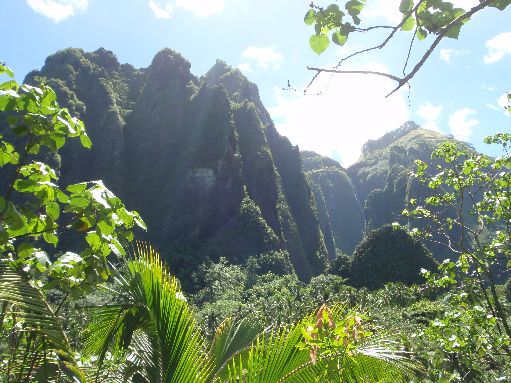
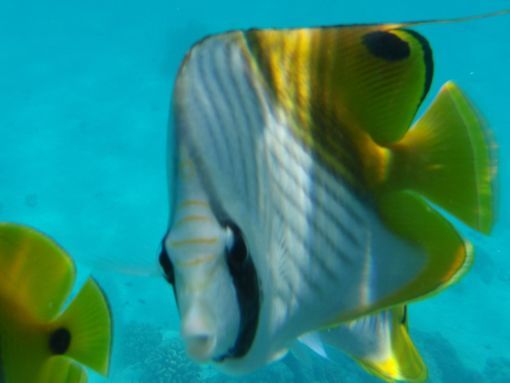
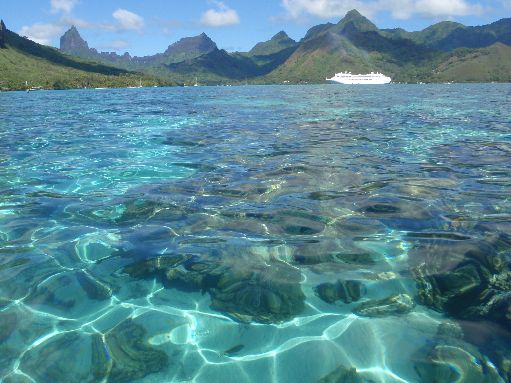
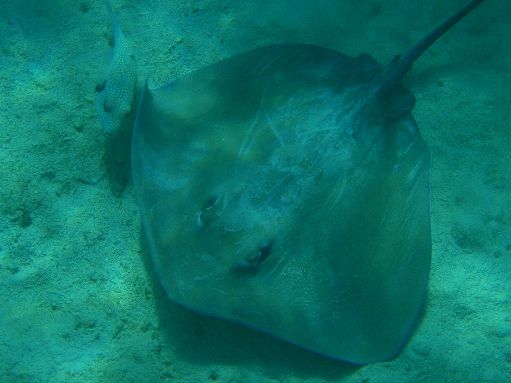
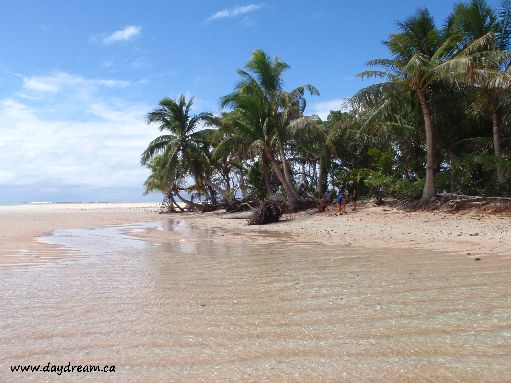
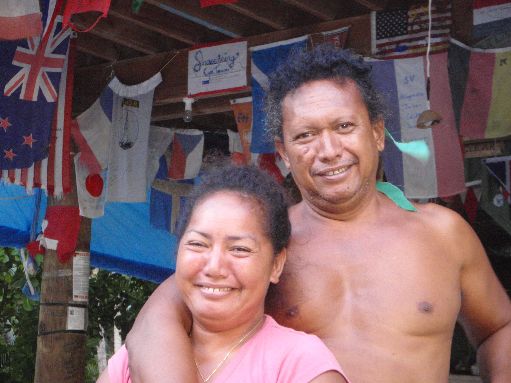
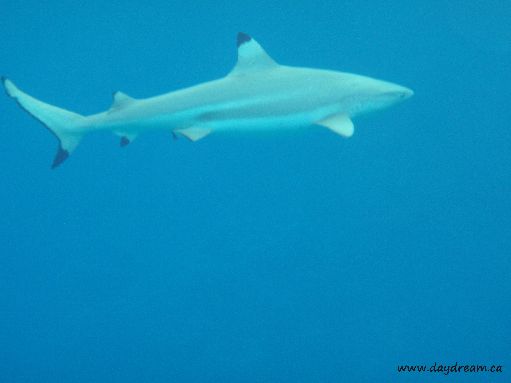
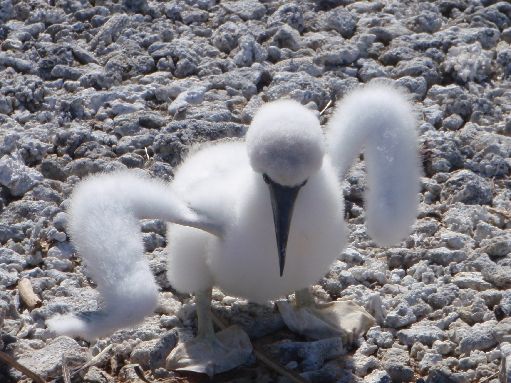
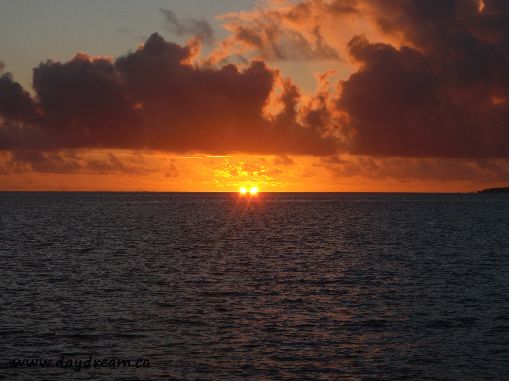
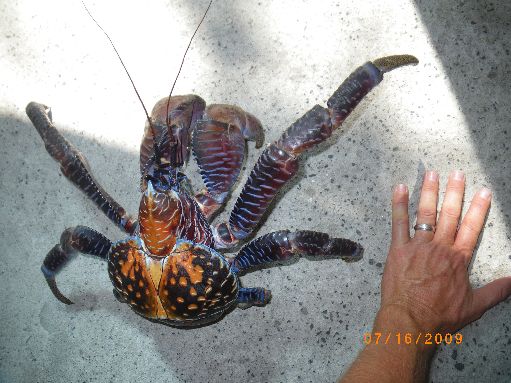
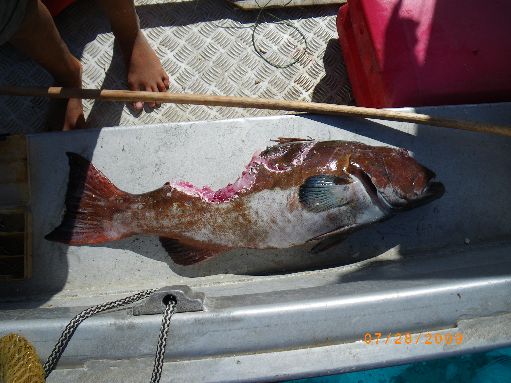
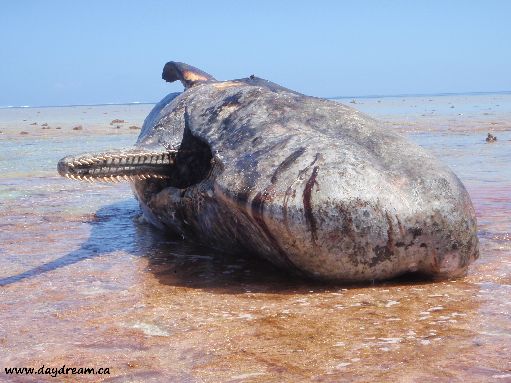
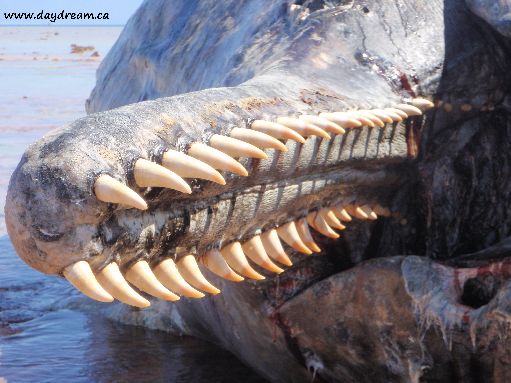
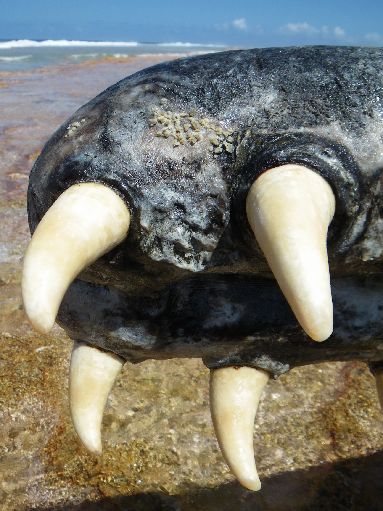
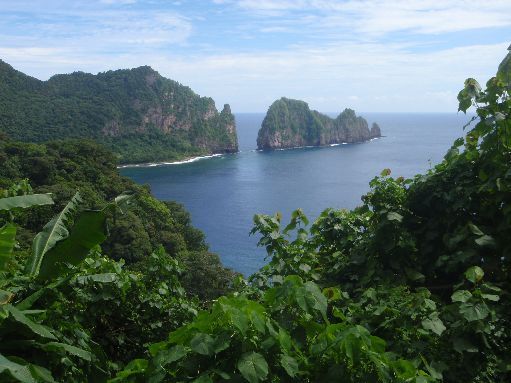
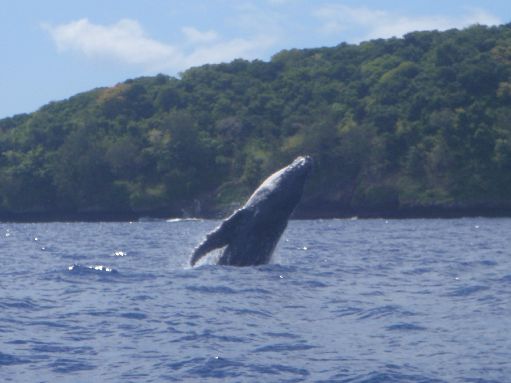
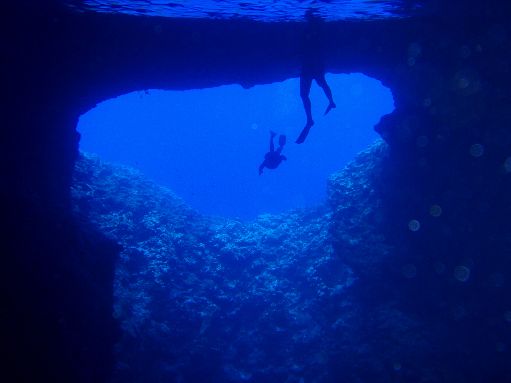
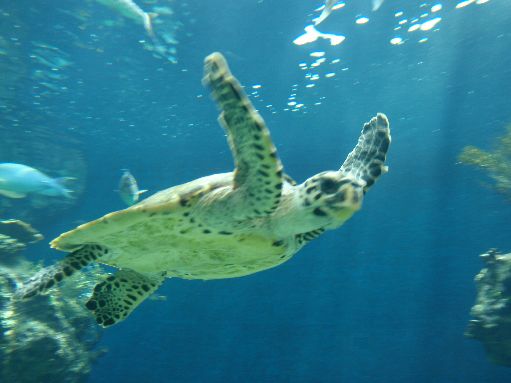
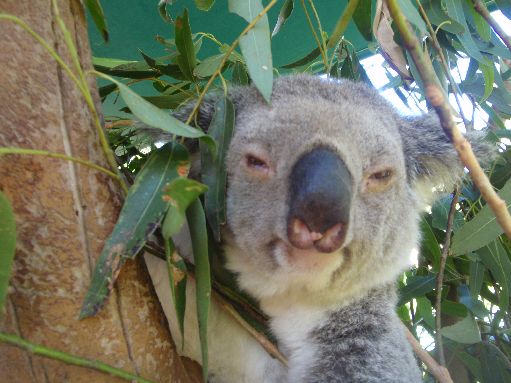


 If we were to describe the last ten months in a couple of words, they would have to be “carefree” and “relaxed”. In fact, from the time we purchased the new “Daydream” in late 2004 right up until February of 2006 we seem to have been under constant time pressures to be somewhere else and to be there quickly. Since March, we’ve finally felt that we truly had “nothing but time” as one of our favourite sayings goes. We’ve only covered about 1700 nautical miles since returning to the boat in February and all of those miles have been in the Sea of Cortez. Our only time pressure was to be well north in the Sea during hurricane season in the summer and fall.
If we were to describe the last ten months in a couple of words, they would have to be “carefree” and “relaxed”. In fact, from the time we purchased the new “Daydream” in late 2004 right up until February of 2006 we seem to have been under constant time pressures to be somewhere else and to be there quickly. Since March, we’ve finally felt that we truly had “nothing but time” as one of our favourite sayings goes. We’ve only covered about 1700 nautical miles since returning to the boat in February and all of those miles have been in the Sea of Cortez. Our only time pressure was to be well north in the Sea during hurricane season in the summer and fall. icans, low-diving grebes, a large, hairy tarantula and most exciting of all, whale sharks! Of course, it wasn’t all whales and sunsets. There was the usual amount of equipment breakage, routine maintenance and snotty weather to contend with which is all part of life on a boat.
icans, low-diving grebes, a large, hairy tarantula and most exciting of all, whale sharks! Of course, it wasn’t all whales and sunsets. There was the usual amount of equipment breakage, routine maintenance and snotty weather to contend with which is all part of life on a boat.
 We even made it as far north as Puerto Penasco way up on the mainland coast again. The tides in Penasco are still just as impressive at over 20 feet. That’s a lot of water to move in and out of that very small harbour every 6 hours! Which may have contributed to our inadvertently (as our friend Shelley would say) taking a piece of the dock with us when we left. There will be no more disussion on that particular subject so as not to make ourselves look silly. The new fuel dock in the harbour has to have a really, really long hose to accommodate the rise and fall of the boat being fuelled which makes for a couple of interesting photos at high and low tide.
We even made it as far north as Puerto Penasco way up on the mainland coast again. The tides in Penasco are still just as impressive at over 20 feet. That’s a lot of water to move in and out of that very small harbour every 6 hours! Which may have contributed to our inadvertently (as our friend Shelley would say) taking a piece of the dock with us when we left. There will be no more disussion on that particular subject so as not to make ourselves look silly. The new fuel dock in the harbour has to have a really, really long hose to accommodate the rise and fall of the boat being fuelled which makes for a couple of interesting photos at high and low tide. Henriette was getting close, we found a tiny little cove, which we named Twiggy Cove and backed the boat into it. We put two anchors out in front and six lines to shore. It was such a comfortable arrangement that we spent several weeks enjoying our private little spot. This bay is one of the nicest in the Sea with clear water and abundant sea life.
Henriette was getting close, we found a tiny little cove, which we named Twiggy Cove and backed the boat into it. We put two anchors out in front and six lines to shore. It was such a comfortable arrangement that we spent several weeks enjoying our private little spot. This bay is one of the nicest in the Sea with clear water and abundant sea life. flat sand beach that dries out at low tide. After removing the rudders which hang down below the bottom of the boat they anchored in a few inches of water then waited for the 15 foot tide to recede. After a few hours “Ebeneezer” was high and dry and perfectly flat. Over the next couple of tide cycles the painting was completed
flat sand beach that dries out at low tide. After removing the rudders which hang down below the bottom of the boat they anchored in a few inches of water then waited for the 15 foot tide to recede. After a few hours “Ebeneezer” was high and dry and perfectly flat. Over the next couple of tide cycles the painting was completed This last year featured visits from my sister Barb and also from our nephew, Algernon. Both of them visited while we were in the lovely city of La Paz. It was fun to see La Paz through Barb’s eyes as someone who had never been there before.
This last year featured visits from my sister Barb and also from our nephew, Algernon. Both of them visited while we were in the lovely city of La Paz. It was fun to see La Paz through Barb’s eyes as someone who had never been there before.  It really is a wonderful place. We also enjoyed a close encounter of the sea lion type in the dinghy with Barb along. As for Algernon, he got the four star arrival treatment when the dinghy was approached by a couple of large, interested dolphins as Wayne was bringing him out to the boat for the first time.
It really is a wonderful place. We also enjoyed a close encounter of the sea lion type in the dinghy with Barb along. As for Algernon, he got the four star arrival treatment when the dinghy was approached by a couple of large, interested dolphins as Wayne was bringing him out to the boat for the first time.
 us wouldn’t have happened in the islands that we had just left behind. Bonaire is a lovely island with some of the clearest water and most abundant tropical fish that we’ve ever seen. You aren’t allowed to anchor in Bonaire so we pulled up right in front of the main town of Kralendijk and picked up a buoy. We spent only a few days there. Just time to see a doctor about my cough and to do a little restaurant eating! Bonaire is part of the Netherlands Antilles just like Sint Maarten but it is much more “Dutch”. We suffered a bit of sticker shock, as it had been a while since we’d spent any money at all and the prices were a lot higher than in Venezuela.
us wouldn’t have happened in the islands that we had just left behind. Bonaire is a lovely island with some of the clearest water and most abundant tropical fish that we’ve ever seen. You aren’t allowed to anchor in Bonaire so we pulled up right in front of the main town of Kralendijk and picked up a buoy. We spent only a few days there. Just time to see a doctor about my cough and to do a little restaurant eating! Bonaire is part of the Netherlands Antilles just like Sint Maarten but it is much more “Dutch”. We suffered a bit of sticker shock, as it had been a while since we’d spent any money at all and the prices were a lot higher than in Venezuela.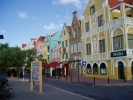 Waters. It’s a good thing it was well protected as we experienced 20-25 knots of wind and rain squalls almost every day. A twenty-minute bus ride would get us to the main city and harbour of Willemstad. The architecture and colour of the buildings is just amazing. In between stocking up and working on the boat we squeezed in a little time for socializing and catching a few movies at the theatre in town.
Waters. It’s a good thing it was well protected as we experienced 20-25 knots of wind and rain squalls almost every day. A twenty-minute bus ride would get us to the main city and harbour of Willemstad. The architecture and colour of the buildings is just amazing. In between stocking up and working on the boat we squeezed in a little time for socializing and catching a few movies at the theatre in town. because it stands a couple hundred feet high as compared to most of the islands, which are exactly the height of the tallest palm tree, plus about 3 feet of sand. Isla Pinos is near the eastern end of Panama, very close to the Columbian border and is in the least developed area of the Kuna Yala. The people here live in houses that you can see through. The walls are made of upright sticks and the roofs are thatch. There is very little electricity although some villages had a TV with DVD and a generator or solar panels to run it. There are no cars and very few outboard motors.
because it stands a couple hundred feet high as compared to most of the islands, which are exactly the height of the tallest palm tree, plus about 3 feet of sand. Isla Pinos is near the eastern end of Panama, very close to the Columbian border and is in the least developed area of the Kuna Yala. The people here live in houses that you can see through. The walls are made of upright sticks and the roofs are thatch. There is very little electricity although some villages had a TV with DVD and a generator or solar panels to run it. There are no cars and very few outboard motors. hollowed out (by hand) log canoe to get to and from the ‘office’. If they are farmers, they farm mostly coconuts but also some mangoes, bananas, platanos and a few veggies. The coconuts are the main crop and the main source of export earnings. Every town has a little concrete dock that the coconut traders dock at to buy coconuts. They show up in extremely colourful and dilapidated old wooden shrimp boats and buy coconuts for 10 cents each and sell flour, sugar and luxuries like potato chips to the locals. Because most of these boats are operated by Columbians and these are the only outsiders that many of these folks normally see, they often asked us if we were Columbians.
hollowed out (by hand) log canoe to get to and from the ‘office’. If they are farmers, they farm mostly coconuts but also some mangoes, bananas, platanos and a few veggies. The coconuts are the main crop and the main source of export earnings. Every town has a little concrete dock that the coconut traders dock at to buy coconuts. They show up in extremely colourful and dilapidated old wooden shrimp boats and buy coconuts for 10 cents each and sell flour, sugar and luxuries like potato chips to the locals. Because most of these boats are operated by Columbians and these are the only outsiders that many of these folks normally see, they often asked us if we were Columbians. One of our favourite sights in the Kuna Yala was the pigsties. For some reason that we never quite figured out, they build little one-pig sties about 3 feet off the ground, right on the ocean front. Anywhere else in the world this would be million dollar real estate!
One of our favourite sights in the Kuna Yala was the pigsties. For some reason that we never quite figured out, they build little one-pig sties about 3 feet off the ground, right on the ocean front. Anywhere else in the world this would be million dollar real estate! through the top layers to display the colours of the layers beneath. The good ones are painstaking works that can take months to make and it is almost impossible to see the tiny stitches. Two matching panels are sewn for each blouse and then connected together by a neckline and sleeves. Molas are often characterized by rather unique colour combinations due to the Kuna’s love of red, burgundy and orange!
through the top layers to display the colours of the layers beneath. The good ones are painstaking works that can take months to make and it is almost impossible to see the tiny stitches. Two matching panels are sewn for each blouse and then connected together by a neckline and sleeves. Molas are often characterized by rather unique colour combinations due to the Kuna’s love of red, burgundy and orange! were very friendly and the culture very interesting. The area was highly photogenic. Between the colourful people themselves, their fascinating villages, the uninhabited coral island paradises and the underwater gardens of diverse coral; it was truly a slice of heaven. We could go on for hours discussing the San Blas but it’s time to move on. Please take a moment to see some of the incredible photos from this area on our website.
were very friendly and the culture very interesting. The area was highly photogenic. Between the colourful people themselves, their fascinating villages, the uninhabited coral island paradises and the underwater gardens of diverse coral; it was truly a slice of heaven. We could go on for hours discussing the San Blas but it’s time to move on. Please take a moment to see some of the incredible photos from this area on our website. We had one quick stop in the historic port of Portobelo before reaching the Panama Canal from the San Blas Islands. Portobelo was one of the ports along the route of the Spanish treasure fleets. We only had a day to spend here but Wayne took some great photos of the old Spanish forts surrounding the bay.
We had one quick stop in the historic port of Portobelo before reaching the Panama Canal from the San Blas Islands. Portobelo was one of the ports along the route of the Spanish treasure fleets. We only had a day to spend here but Wayne took some great photos of the old Spanish forts surrounding the bay. one of our favourite cities and it is even prettier as they have made wonderful improvements on the waterfront malecon. We enjoyed the many anchorages north of La Paz as we worked our way up to Bahia Concepcion along the way drinking in the spectacular desert/ocean landscapes. Here we stopped for our final bit of cruising this season before heading across the Sea of Cortez to San Carlos. The weather was really heating up and Concepcion lived up to its reputation as ‘the oven’.
one of our favourite cities and it is even prettier as they have made wonderful improvements on the waterfront malecon. We enjoyed the many anchorages north of La Paz as we worked our way up to Bahia Concepcion along the way drinking in the spectacular desert/ocean landscapes. Here we stopped for our final bit of cruising this season before heading across the Sea of Cortez to San Carlos. The weather was really heating up and Concepcion lived up to its reputation as ‘the oven’.

